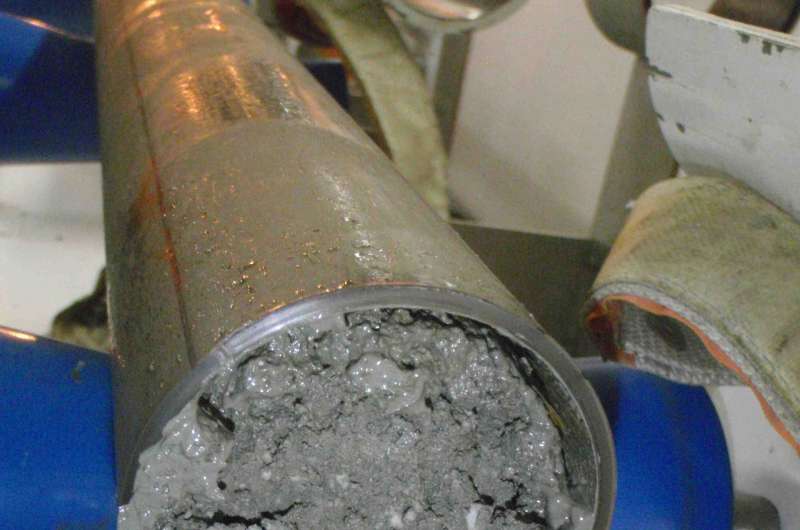Masses of methane from mud volcanoes

In the seabed, there are numerous microorganisms that play an important role in the global carbon cycle. Until now, however, it has not been understood to what extent geodynamic processes such as the subduction of oceanic plates influence this microbial activity and, in turn, impact the carbon balance. A study carried out by an international team of researchers, including scientists from the GFZ German Research Centre for Geosciences, now provides new evidence. They drilled down to a depth of 200 meters into an underwater mud volcano. Based on the recovered samples, they found that the microorganisms in the sediment are extremely active and form about 90 percent of the methane released from that depth. Apparently, the role of mud volcanoes in the global methane cycle has been significantly underestimated, the authors now conclude.
Underwater mud volcanoes are located at active plate margins, where oceanic crust is moving under the continental crust—a process called subduction. Where the seafloor is pushed under the continent, the upper sediment layer gets shaved off at the foot of the continent and is then compressed by trailing sediment. In this sediment package, the so-called accretionary wedge, liquids as well as materials with a lower density are forced upward from deeper layers. Thus, mud volcanoes form on the surface of the seabed comprising thin sediment as well as water and gases instead of lava.
The researchers examined such a volcano, located in the Nankai trough beside Japan, with the help of the Japanese drilling ship Chikyu. As the team of researchers led by Akira Ijiri from the Research Center JAMSTEC reports, the "mountain" KMV # 5 rises to between 112 and 160 meters above the surrounding ocean floor; in this region alone, there are a further 13 mud volcanoes at the bottom of the Pacific. In the samples, recovered from the sediment down to a depth of 200 meters deep, the researchers discovered, among other things, bright fragments of gas hydrate, i.e. a methane-water compound which, under certain temperature-pressure conditions, is neither liquid nor gaseous, but solid. Extensive analysis of the chemical composition, the isotope ratio, as well as of the biomarkers was carried out. GFZ researcher Jens Kallmeyer and his former doctoral student Rishi Ram Adhikari measured the enzyme activity of hydrogenase. The application of this method allows for the direct demonstration that hydrogen was used for metabolic reactions which eventually yield methane.
The results show that 90 percent of the methane was produced by microorganisms; only a small part was formed at great depth through chemical processes alone. Obviously, the microbes are fed by fluids pressed through the powerful sediments after subduction. "If these mud volcanoes are not completely unique in the world, and there's no indication at all for this, then the role of mud volcanoes in the global methane cycle has been massively underestimated," says Kallmeyer. "Furthermore, the study shows that indicators for the formation processes of methane—biological or chemical to date—do not work in the investigated mud volcano. If this applies to others, then the global models on the origin of atmospheric methane need to be rethought."
The study is published in Science Advances.
More information: "Deep-biosphere methane production stimulated by geofluids in the Nankai accretionary complex" Science Advances, DOI: 10.1126/sciadv.aao4631 , advances.sciencemag.org/content/4/6/eaao4631
Journal information: Science Advances
Provided by Helmholtz Association of German Research Centres





















